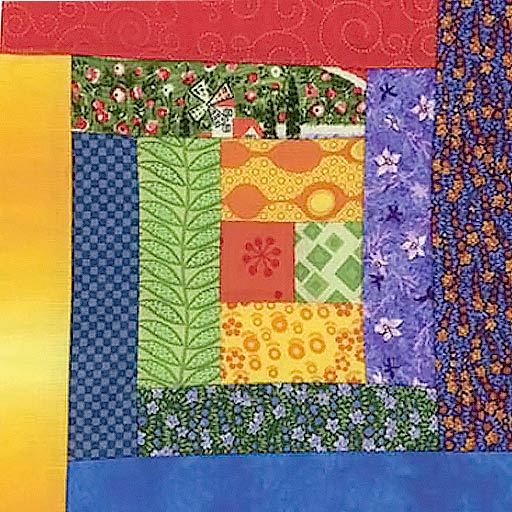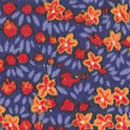Vigiling is the opportunity to put aside the physical and medical concerns about the dying person and focus on the spiritual. While vigiling, one prays and focuses attention on the dying person, to create a setting of love and not fear.
Quakers can offer a significant type of vigil with the dying as a Meeting for Worship. This prayerful sitting with a dying person in expectant worship was a common practice in the 1700s. Worshippers anticipated ‘walking with the dying person’ as they passed over. It was felt that there might come a message to provide direction and guidance for those left behind, but most importantly it meant that people did not die alone. In today’s world it is difficult to define when a person will actually die, but a Meeting for Worship is a strong gift at any point in the dying process.
There are often stages in the dying process. Initially, a person becomes introspective, draws inward and reflects on his or her life. This thoughtfulness can lead to concerns about unfinished business with relationships. Tiosgenphyroheal . As part of vigiling, a Friend can assist the person to write a letter or make a needed connection. Simply being a good listener to these life stories, meaningful times the person recalls and significant people in their life, is important.
As the body weakens, more time is spent sleeping as well as in altered consciousness. The dying person travels into another realm and then back again. This experience can be very joyous. Often they are ‘visioning’ or encountering loved ones who have already died. A vigiling Friend can provide support by listening, asking questions, and validating the dying person’s experience, acknowledging that though the body may be weakening, the mind and spirit may be very much engaged. For more ideas about vigiling read, Attending the Dying, a Handbook of Practical Guidelines by Megory Anderson, author of Sacred Dying.
The last of the senses to dim is hearing. There are a variety of resources to have available to nurture a dying person. Music is especially good. Live string music that does not have a familiar tune, such as harp music, can be helpful, but not always. It is important to note how the person responds to the music. Sometimes familiar music seems the obvious choice, but it can produce a strong emotional response making it hard for a person to let go. Hymns with a message of death, such as “I’ll Fly Away,” may open up that space. Scripture or poetry read in measured doses can bring solace. Remember that even in an unconscious state a person can hear, so keep conversations outside the room and provide soothing sound or sacred silence.
While listening to life stories or music, perhaps the most satisfying, tender offering to a dying person can be touch. If the dying person agrees, hold the hand and gently massage or offer to massage the feet with scented oil. This type of touch brings relaxation, can relieve pain, and can open trust and confidence. The mind and soul are more free to go through the natural dying process.
It is a gift to be allowed to walk with another person through the dying process. Certainly it is helpful to have experience around the dying. Sometimes it is easier for a non-family member to guide the vigiling experience. Family can be so emotionally involved it is difficult to stay focused on the dying person. It is helpful for everyone to go through hospice volunteer training to garner experience and confidence in being with the dying. Further experience can be garnered through therapeutic touch and vigil training. It would be helpful for every Monthly Meeting to have access to a person skilled and called to support vigiling.
“I have inwardly listened around the words and feelings of those who are dying finding the work of God echoing in my heart and I have intuitively come to know that death is spiritual birth, the completion of God’s work upon us.”
Lucy Screechfield McIver, A Song of Death, Our Spiritual Birth: A Quaker Way of Dying, Pendle Hill Pamphlet
Download this article in pamphlet form
LINKS TO MORE INFORMATION: Click on the blue text below to be directed to outside websites that offer additional information on this topic. Articles from this site will open in the same browser window/tab. Articles from other websites will open in a new window; when you are done, simply click out of that window and you will be back on this site.
More articles on this website:
Being Present When Friends Are Ill
Care of the Caregiver
Grief
Hospice Care
Role of the Spiritual Community in Care
Other Articles/Links:
www.sacreddying.org provides training on being with the dying.
www.therapeutictouch.org explains the value and uses of therapeutic touch.
Sources/Further Reading:
Megory Anderson, Sacred Dying, Creating Rituals for the End of Life, 2003, Marlowe and Company, New York, NY.
Kirsten Backstrom, In Beauty, A Quaker Approach to End of Life Care, Pendle Hill Pamphlet 355, 2010, Pendle Hill, Wallingford, PA.
Denys Cope, RN, BSN, Dying: A Natural Passage, 2008, Three Whales Publishing, Santa Fe, NM..
Marie de Hennezel, Intimate Death, How the Dying Teach Us How to Live, 1998, Vintage Books, New York, NY
Maggie Callanan and Patricia Kelley, Final Gifts, Understanding the Special Awareness, Needs, and Communications of the Dying, 1997, Bantam Books, New York, NY.

